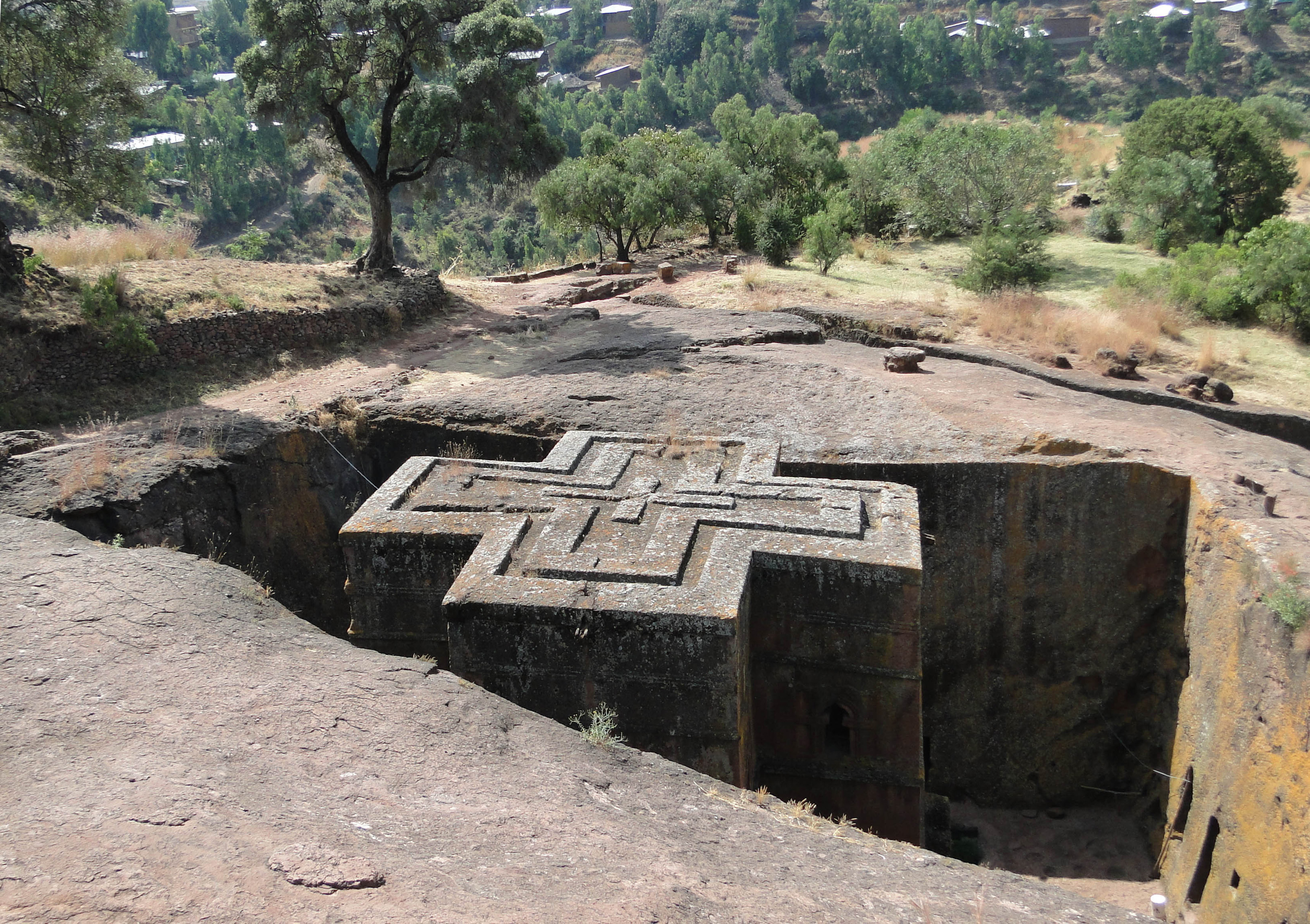Lalibela, a highland town in northern Ethiopia, stands as a marvel of medieval engineering and a spiritual beacon for Ethiopian Orthodox Christians. Renowned for its monolithic rock-hewn churches, the site reflects a blend of faith, tradition, and artistry. Carved out of volcanic rock in the 12th and 13th centuries under the reign of King Lalibela, these structures were intended to be a 'New Jerusalem' and are legendary for their architectural innovation and religious significance. Today, the churches remain functional as places of worship and pilgrimage, particularly during significant religious celebrations such as the Ethiopian Orthodox Christmas (Genna) and Epiphany (Timkat), drawing devotees from across the country and the globe.
Lalibela's historical significance is rooted in its status as a center of Christian pilgrimage for almost a millennium. The town's layout and construction are said to recall symbolic elements of Jerusalem. Each of the eleven churches is unique in its design and dedicated to specific saints or religious themes, reflecting the intricate spirituality of the Ethiopian Orthodox tradition. Among the most notable landmarks is Biete Medhane Alem (House of the Saviour of the World), reputed to be the largest monolithic church in the world, echoing the grand basilicas of the ancient Christian world.
Geographically situated at an altitude of around 2,500 meters, Lalibela enjoys a relatively mild and temperate climate, characterized by cool mornings and evenings, making it conducive to exploration. The weather patterns, marked by two distinct seasons, the rainy season from June to September and the dry season from October to May, influence the timing of pilgrimages and festivals, adding a rhythmic harmony to the cultural fabric of Lalibela.
One of the unique features of Lalibela is the interconnected network of tunnels and trenches that join the churches, symbolizing an earthly representation of a spiritual journey. The site’s intricate carvings and frescoes pay homage to biblical narratives and saintly lore, reflecting the cross-cultural interactions through trade and religious discourse in ancient Ethiopia. Lalibela is more than an archaeological curiosity; it is a living testament to Ethiopia's rich cultural tapestry and steadfast devotion.
Trivia about Lalibela includes the ongoing mystery of how the churches were built with the rudimentary technology of the time, adding an aura of myth and legend to its history. Lalibela's rock-hewn churches are recognized as a UNESCO World Heritage Site, underscoring their importance not just to Ethiopia, but to the world's cultural and historical patrimony.
 Bernard Gagnon , CC BY-SA 3.0, via Wikimedia Commons
Bernard Gagnon , CC BY-SA 3.0, via Wikimedia CommonsEthiopiaAfrica
Nearby Places
Simien Mountains(166 km)
Dramatic mountain ecosystemRock Churches of Tigray(178 km)
Ancient churches carved into Tigray's rugged cliffs, embodying centuries of faith and Ethiopian history.Gondar(185 km)
City of medieval castles, Gondar is a historical gem with a rich cultural tapestry, set amidst the stunning landscapes of Ethiopia.Bahir Dar(187 km)
Lake monasteries and Blue Nile FallsAksum(235 km)
Ancient capital with mysterious obelisks, rich in history and enigma, and site of the legendary Ark of the Covenant.Log in to write a review.
Sustainable Travel Tips
Plan Mindfully
- Choose direct flights when possible
- Travel during off-peak seasons
- Pack light and bring reusables
- Prefer eco-friendly accommodations
At Your Destination
- Use public transport or walk
- Support local businesses
- Respect wildlife and habitats
- Choose activities with minimal impact
Daily Habits
- Reuse hotel towels
- Take shorter showers
- Turn off lights/AC when out
- Carry a reusable water bottle
